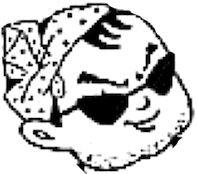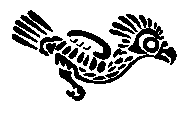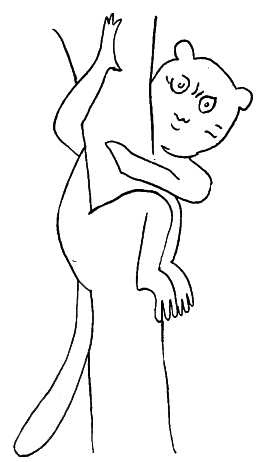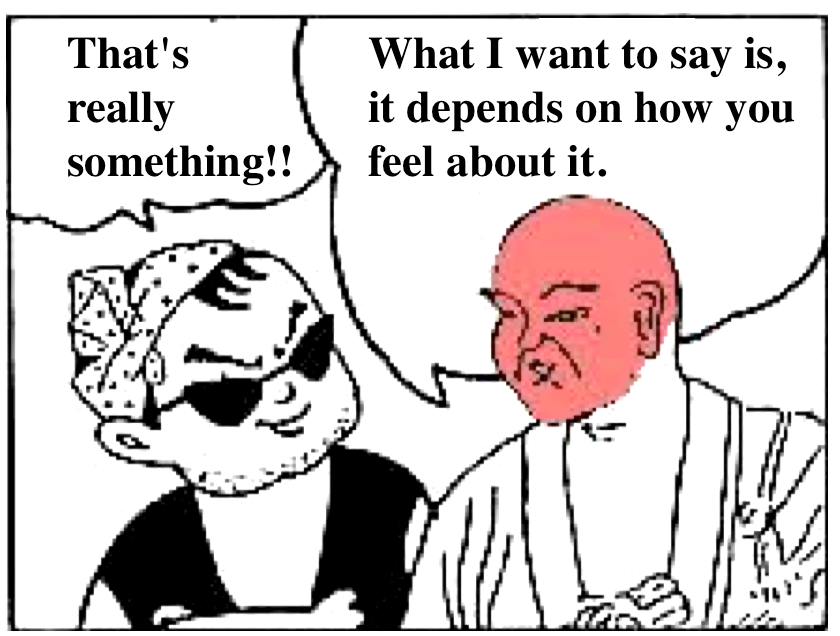This
is the beginning of the Ancient Word, here in this place called Quiché.
Here we shall inscribe, we shall implant the Ancient Word, the
potential and source for everything done in the citadel of Quiché, in
the nation of Quiché people.
And here we shall take up the demonstration, revelation, and account of
how things were put in shadow and brought to light by
the Maker, Modeler,
named Bearer, Begetter,
Hunahpu Possum, Hunahpu Coyote,
Great White Peccary, Coati,
Sovereign Plumed Serpent,
Heart of the Lake, Heart of the Sea,
plate shaper, bowl shaper, as they are called,
also named, also described as
the midwife, matchmaker
named Xpiyacoc, Xmucane,
defender, protector,
twice a midwife, twice a matchmaker,
as is said in the words of Quiché. They accounted for everything -- and
did it, too -- as enlightened beings, in enlightened words. We shall
write about this now amid the preaching of God, in Christendom now. We
shall bring it out because there is no longer
a place to see it, a Council Book,
a place to see "The Light That Came from Beside the Sea,"
the account of "Our Place in the Shadows."
a place to see "The Dawn of Life,"
as it is called. There is the original book and ancient writing, but
the one who reads and assesses it has a hidden identity. It takes a
long performance and account to complete the lighting of all the
sky-earth:
the fourfold siding, fourfold cornering,
measuring, fourfold staking,
halving the cord, stretching the cord
in the sky, on the earth,
the four sides, the four comers, as it is said,
by the Maker, Modeler,
mother-father of life, of humankind,
giver of breath, giver of heart,
bearer, upbringer in the light that lasts
of those born in the light, begotten in the light;
worrier, knower of everything, whatever there is:
sky-earth, lake-sea.
This is the account, here it is:
Now it still ripples, now it still murmurs, ripples, it still sighs,
still hums, and it is empty under the sky.
Here follow the first words, the first eloquence:
There is not yet one person, one animal, bird, fish, crab, tree, rock,
hollow, canyon, meadow, forest. Only the sky alone is there; the face
of the earth is not clear. Only the sea alone is pooled under all the
sky; there is nothing whatever gathered together. It is at rest; not a
single thing stirs. It is held back, kept at rest under the sky.
Whatever there is that might be is simply not there: only the pooled
water, only the calm sea, only it alone is pooled.
Whatever might be is simply not there: only murmurs, ripples, in the
dark, in the night. Only the Maker, Modeler alone, Sovereign Plumed
Serpent, the Bearers, Begetters are in the water, a glittering light.
They are there, they are enclosed in quetzal feathers, in blue-green.
Thus the name, "Plumed Serpent." They are great knowers, great thinkers
in their very being.
And of course there is the sky, and there is also the Heart of Sky.
This is the name of the god, as it is spoken.
And then came his word, he came here to the Sovereign Plumed Serpent,
here in the blackness, in the early dawn. He spoke with the Sovereign
Plumed Serpent, and they talked, then they thought, then they worried.
They agreed with each other, they joined their words, their thoughts.
Then it was clear, then they reached accord in the light, and then
humanity was clear, when they conceived the growth, the generation of
trees, of bushes, and the growth of life, of humankind, in the
blackness, in the early dawn, all because of the Heart of Sky, named
Hurricane. Thunderbolt Hurricane comes first, the second is Newborn
Thunderbolt, and the third is Sudden Thunderbolt.
So there were three of them, as Heart of Sky, who came to the Sovereign
Plumed Serpent, when the dawn of life was conceived:
"How should the sowing be, and the dawning? Who is to be the provider,
nurturer?"
"Let it be this way, think about it: this water should be removed,
emptied out for the formation of the earth's own plate and platform,
then should come the sowing, the dawning of the sky-earth. But there
will be no high days and no bright praise for our work, our design,
until the rise of the human work, the human design," they said.
And then the earth arose because of them, it was simply their word that
brought it forth. For the forming of the earth they said "Earth." It
arose suddenly, just like a cloud, like a mist, now forming, unfolding.
Then the mountains were separated from the water, all at once the great
mountains came forth. By their genius alone, by their cutting edge
alone they carried out the conception of the mountain-plain, whose face
grew instant groves of cypress and pine.
And the Plumed Serpent was pleased with this:
"It was good that you came, Heart of Sky, Hurricane, and Newborn
Thunderbolt, Sudden Thunderbolt. Our work, our design will turn out
well," they said.
And the earth was formed first, the mountain-plain. The channels of
water were separated; their branches wound their ways among the
mountains. The waters were divided when the great mountains appeared.
Such was the formation of the earth when it was brought forth by the
Heart of Sky, Heart of Earth, as they are called, since they were the
first to think of it. The sky was set apart, and the earth was set
apart in the midst of the waters.
Such was their plan when they thought, when they worried about the
completion of their work.
Now they planned the animals of the mountains, all the guardians of the
forests, creatures of the mountains: the deer, birds, pumas, jaguars,
serpents, rattlesnakes, fer-de-lances, guardians of the bushes.
A Bearer, Begetter speaks:
"Why this pointless humming? Why should there merely be rustling
beneath the trees and bushes?"
"Indeed -- they had better have guardians," the others replied. As soon
as they thought it and said it, deer and birds came forth.
And then they gave out homes to the deer and birds:
"You, the deer: sleep along the rivers, in the canyons. Be here in the
meadows, in the thickets, in the forests, multiply yourselves. You will
stand and walk on all fours," they were told.
So then they established the nests of the birds, small and great:
"You, precious birds: your nests, your houses are in the trees, in the
bushes. Multiply there, scatter there, in the branches of trees, the
branches of bushes," the deer and birds were told.
When this deed had been done, all of them had received a place to sleep
and a place to stay. So it is that the nests of the animals are on the
earth, given by the Bearer, Begetter. Now the arrangement of the deer
and birds was complete.
And then the deer and birds were told by the Maker, Modeler, Bearer,
Begetter:
"Talk, speak out. Don't moan, don't cry out. Please talk, each to each,
within each kind, within each group," they were told -- the deer,
birds, puma, jaguar, serpent.
"Name now our names, praise us. We are your mother, we are your father.
Speak now:
'Hurricane,
Newborn Thunderbolt, Sudden Thunderbolt,
Heart of Sky, Heart of Earth,
Maker, Modeler,
Bearer, Begetter,'
speak, pray to us, keep our days," they were told. But it didn't turn
out that they spoke like people: they just squawked, they just
chattered, they just howled. It wasn't apparent what language they
spoke; each one gave a different cry. When the Maker, Modeler heard
this:
"It hasn't turned out well, they haven't spoken," they said among
themselves. "It hasn't turned out that our names have been named. Since
we are their mason and sculptor, this will not do," the Bearers and
Begetters said among themselves. So they told them:
"You will simply have to be transformed. Since it hasn't turned out
well and you haven't spoken, we have changed our word:
"What you feed on, what you eat, the places where you sleep, the places
where you stay, whatever is yours will remain in the canyons, the
forests. Although it turned out that our days were not kept, nor did
you pray to us, there may yet be strength in the keeper of days, the
giver of praise whom we have yet to make. Just accept your service,
just let your flesh be eaten.
"So be it, this must be your service," they were told when they were
instructed -- the animals, small and great, on the face of the earth.
And then they wanted to test their timing again, they wanted to
experiment again, and they wanted to prepare for the keeping of days
again. They had not heard their speech among the animals; it did not
come to fruition and it was not complete.
And so their flesh was brought low: they served, they were eaten, they
were killed -- the animals on the face of the earth.
Again there comes an experiment with the human work, the human design,
by the Maker, Modeler, Bearer, Begetter:
"It must simply be tried again. The time for the planting and dawning
is nearing. For this we must make a provider and nurturer. How else can
we be invoked and remembered on the face of the earth? We have already
made our first try at our work and design, but it turned out that they
didn't keep our days, nor did they glorify us.
"So now let's try to make a giver of praise, giver of respect,
provider, nurturer," they said.
So then comes the building and working with earth and mud. They made a
body, but it didn't look good to them. It was just separating, just
crumbling, just loosening, just softening, just disintegrating, and
just dissolving. Its head wouldn't turn, either. Its face was just
lopsided, its face was just twisted. It couldn't look around. It talked
at first, but senselessly. It was quickly dissolving in the water.
"It won't last," the mason and sculptor said then. "It seems to be
dwindling away, so let it just dwindle. It can't walk and it can't
multiply, so let it be merely a thought," they said.
So then they dismantled, again they brought down their work and design.
Again they talked:
"What is there for us to make that would turn out well, that would
succeed in keeping our days and praying to us?" they said. Then they
planned again:
"We'll just tell Xpiyacoc, Xmucane, Hunahpu Possum, Hunahpu Coyote, to
try a counting of days, a counting of lots," the mason and sculptor
said to themselves. Then they invoked Xpiyacoc, Xmucane.
Then comes the naming of those who are the midmost seers: the
"Grandmother of Day, Grandmother of Light," as the Maker, Modeler
called them. These are names of Xpiyacoc and Xmucane.
When Hurricane had spoken with the Sovereign Plumed Serpent, they
invoked the daykeepers, diviners, the midmost seers:
"There is yet to find, yet to discover how we are to model a person,
construct a person again, a provider, nurturer, so that we are called
upon and we are recognized: our recompense is in words.
Midwife, matchmaker,
our grandmother, our grandfather,
Xpiyacoc, Xmucane,
let there be planting, let there be the dawning
of our invocation, our sustenance, our recognition
by the human work, the human design,
the human figure, the human form.
So be it, fulfill your names:
Hunahpu Possum, Hunahpu Coyote,
Bearer twice over, Begetter twice over,
Great Peccary, Great Coati,
lapidary, jeweler,
sawyer, carpenter,
plate shaper, bowl shaper,
incense maker, master craftsman,
Grandmother of Day, Grandmother of Light.
You have been called upon because of our work, our design. Run your
hands over the kernels of corn, over the seeds of the coral tree, just
get it done, just let it come out whether we should carve and gouge a
mouth, a face in wood," they told the daykeepers.
And then comes the borrowing, the counting of days; the hand is moved
over the corn kernels, over the coral seeds, the days, the lots.
Then they spoke to them, one of them a grandmother, the other a
grandfather.
This is the grandfather, this is the master of the coral seeds:
Xpiyacoc is his name.
And this is the grandmother, the daykeeper, diviner who stands behind
others: Xmucane is her name.
And they said, as they set out the days:
"Just let it be found, just let it be discovered,
say it, our ear is listening,
may you talk, may you speak,
just find the wood for the carving and sculpting
by the builder, sculptor.
Is this to be the provider, the nurturer
when it comes to the planting, the dawning?
You corn kernels, you coral seeds,
you days, you lots:
may you succeed, may you be accurate,"
they said to the corn kernels, coral seeds, days, lots. "Have shame,
you up there, Heart of Sky: attempt no deception before the mouth and
face of Sovereign Plumed Serpent," they said. Then they spoke straight
to the point:
"It is well that there be your manikins, woodcarvings, talking,
speaking, there on the face of the earth."
"So be it," they replied. The moment they spoke it was done: the
manikins, woodcarvings, human in looks and human in speech.
This was the peopling of the face of the earth:
They came into being, they multiplied, they had daughters, they had
sons, these manikins, woodcarvings. But there was nothing in their
hearts and nothing in their minds, no memory of their mason and
builder. They just went and walked wherever they wanted. Now they did
not remember the Heart of Sky.
And so they fell, just an experiment and just a cutout for humankind.
They were talking at first but their faces were dry. They were not yet
developed in the legs and arms. They had no blood, no lymph. They had
no sweat, no fat. Their complexions were dry, their faces were crusty.
They flailed their legs and arms, their bodies were deformed.
And so they accomplished nothing before the Maker, Modeler who gave
them birth, gave them heart. They became the first numerous people here
on the face of the earth.
Again there comes a humiliation, destruction, and demolition. The
manikins, woodcarvings were killed when the Heart of Sky devised a
flood for them. A great flood was made; it came down on the heads of
the manikins, woodcarvings.
The man's body was carved from the wood of the coral tree by the Maker,
Modeler. And as for the woman, the Maker, Modeler needed the hearts of
bulrushes for the woman's body. They were not competent, nor did they
speak before the builder and sculptor who made them and brought them
forth, and so they were killed, done in by a flood:
There came a rain of resin from the sky.
There came the one named Gouger of Faces: he gouged out their eyeballs.
There came Sudden Bloodletter: he snapped off their heads.
There came Crunching Jaguar: he ate their flesh.
There came Tearing Jaguar: he tore them open.
They were pounded down to the bones and tendons, smashed and pulverized
even to the bones. Their faces were smashed because they were
incompetent before their mother and their father, the Heart of Sky,
named Hurricane. The earth was blackened because of this; the black
rainstorm began, rain all day and rain all night. Into their houses
came the animals, small and great. Their faces were crushed by things
of wood and stone. Everything spoke: their water jars, their tortilla
griddles, their plates, their cooking pots, their dogs, their grinding
stones, each and every thing crushed their faces. Their dogs and
turkeys told them:
"You caused us pain, you ate us, but now it is you whom we shall eat."
And this is the grinding stone:
"We were undone because of you.
Every day, every day,
in the dark, in the dawn, forever,
r-r-rip, r-r-rip,
r-r-rub, r-r-rub,
right in our faces, because of you.
This was the service we gave you at first, when you were still people,
but today you will learn of our power. We shall pound and we shall
grind your flesh," their grinding stones told them.
And this is what their dogs said, when they spoke in their turn:
"Why is it you can't seem to give us our food? We just watch and you
just keep us down, and you throw us around. You keep a stick ready when
you eat, just so you can hit us. We don't talk, so we've received
nothing from you. How could you not have known? You did know that we
were wasting away there, behind you.
"So, this very day you will taste the teeth in our mouths. We shall eat
you," their dogs told them, and their faces were crushed.
And then their tortilla griddles and cooking pots spoke to them in turn:
"Pain! That's all you've done for us. Our mouths are sooty, our faces
are sooty. By setting us on the fire all the time, you burn us. Since
we felt no pain, you try it. We shall burn you," all their cooking pots
said, crushing their faces.
The stones, their hearthstones were shooting out, coming right out of
the fire, going for their heads, causing them pain. Now they run for
it, helter-skelter.
They want to climb up on the houses, but they fall as the houses
collapse.
They want to climb the trees; they're thrown off by the trees.
They want to get inside caves, but the caves slam shut in their faces.
Such was the scattering of the human work, the human design. The people
were ground down, overthrown. The mouths and faces of all of them were
destroyed and crushed. And it used to be said that the monkeys in the
forests today are a sign of this. They were left as a sign because wood
alone was used for their flesh by the builder and sculptor.
So this is why monkeys look like people: they are a sign of a previous
human work, human design -- mere manikins, mere woodcarvings.
This was when there was just a trace of early dawn on the face of the
earth, there was no sun. But there was one who magnified himself; Seven
Macaw is his name. The sky-earth was already there, but the face of the
sun-moon was clouded over. Even so, it is said that his light provided
a sign for the people who were flooded. He was like a person of genius
in his being.
"I am great. My place is now higher than that of the human work, the
human design. I am their sun and I am their light, and I am also their
months.
"So be it: my light is great. I am the walkway and I am the foothold of
the people, because my eyes are of metal. My teeth just glitter with
jewels, and turquoise as well; they stand out blue with stones like the
face of the sky.
"And this nose of mine shines white into the distance like the moon.
Since my nest is metal, it lights up the face of the earth. When I come
forth before my nest, I am like the sun and moon for those who are born
in the light, begotten in the light. It must be so, because my face
reaches into the distance," says Seven Macaw.
It is not true that he is the sun, this Seven Macaw, yet he magnifies
himself, his wings, his metal. But the scope of his face lies right
around his own perch; his face does not reach everywhere beneath the
sky. The faces of the sun, moon, and stars are not yet visible, it has
not yet dawned.
And so Seven Macaw puffs himself up as the days and the months, though
the light of the sun and moon has not yet clarified. He only wished for
surpassing greatness. This was when the flood was worked upon the
manikins, woodcarvings.
And now we shall explain how Seven Macaw died, when the people were
vanquished, done in by the mason and sculptor.
Copyright © 1985, 1996 by Dennis Tedlock
|
これは古代の言葉の始まりである。ここ、キチェと呼ばれるこの場所で。
ここに我々は刻み込むだろう。古代の言葉を刻み込むだろう。キチェの城塞で、キチェの人々の国で行われるすべてのものの潜在力と源である古代の言葉を。
そして、ここに我々は、物事が影に置かれ、光に照らされた方法についての実証、啓示、説明を取り上げるだろう。
創造主、造形者、
ベアラ、ベゲッタ、
フナフプ・ポッサム、フナフプ・コヨーテ、
グレート・ホワイト・ペッカリー、コアティ、
ソブリン・プルームド・サーペント、
ハート・オブ・ザ・レイク、ハート・オブ・ザ・シー、
プレート・シェイパー、ボウル・シェイパー、
また、
助産婦、仲人
として知られ、
守護者、保護者、
2度のお産婆さん、2度のお見合い仲介人、
とキチェ族の言葉で言われている。彼らは悟りを開いた存在として、悟りを開いた言葉で、すべてを説明し、また実行した。私たちは今、キリスト教世界におけ
る神の説教の中で、このことについて書く。私たちはそれを明らかにする。なぜなら、もはや
目にする場所がないからだ。評議会記録、
『海辺から来た光』を見る場所、
『影の中の私たちの場所』の記録、
『生命の夜明け』を見る場所、
と呼ばれる場所はもはや存在しない。原本の書物や古代の文書は存在するが、それを読み評価する者は身元を隠している。天と地を照らすためには、長いパ
フォーマンスと記録が必要である。
4つの側面、4つの角、
測量、四隅の杭打ち、
綱の半分、
天と地、
四辺、四隅、
創造主、造形者、
生命の母と父、人類の
息の与え手、心の与え手、
光の担い手、光の担い手、
光の中で生まれた者、光の中で生み出された者、
光の中で生まれ、光の中で生み出された者たち、
心配する者、すべてを知る者、存在するものすべて:
空、大地、湖、海。
これがその記録、ここにその記録がある:
今も波打つ、今もささやく、波打つ、今もため息をつく、今も唸る、そして空の下は空っぽだ。
ここに最初の言葉、最初の雄弁が続く:
まだ一人の人間も、一匹の動物も、鳥も、魚も、カニも、木も、岩も、くぼみも、峡谷も、草原も、森もない。そこにあるのは空だけ。大地の表面ははっきりし
ない。空の下に海だけが広がっている。何も集まっていない。静止している。ただ静かに空の下に留まっている。
あり得るかもしれないものは、ただそこにはない。ただ水がたまり、ただ海が静まり、ただそれだけがたまったままになっている。
あり得るものは何であれ、そこには存在しない。ただ、ざわめきとさざ波だけが、暗闇と夜の中に存在する。創造主、造形者、至高の羽の生えた蛇、運び手、生
みの親だけが、きらめく光として水の中に存在する。彼らはそこに存在し、ケツァール(羽毛の生えた蛇)の羽に包まれ、青緑色に輝いている。
これが「羽の生えた蛇」という名前の由来である。彼らは存在そのものが偉大な知識であり、偉大な思考である。
そしてもちろん空があり、空の中心もある。これが神の名であり、語られるとおりである。
そして彼の言葉が来た。彼は主たる羽の生えた蛇のもとへ来た。夜明け前の暗闇の中へ。彼は主たる羽の生えた蛇と語り、彼らは話し、考え、心配した。彼らは
互いに同意し、彼らの言葉と思想を一つにした。そして、それは明らかになり、彼らは光の中で合意に達し、そして人類は明らかになった。彼らは、闇の中で、
夜明けに、木々や低木の成長、生命の成長、人類の成長を思い描いた。それはすべて、ハリケーンと名付けられた空の中心部のおかげだった。サンダーボルト・
ハリケーンが最初に来る。2番目はニューボーン・サンダーボルト、3番目はサドン・サンダーボルトだ。
生命の夜明けが構想されたとき、至高の羽の蛇のもとにやって来た天空のハートとして、彼らは3人いた。
「種まきと夜明けはどうあるべきか? 誰が提供者となり、育むのか?」
「こうしよう。よく考えてみたまえ。この水を取り除き、空の大地の形成のために空っぽにしなければならない。そして、空の大地の夜明けとなる種まきが行わ
れるのだ。しかし、人間の仕事、人間の設計が現れるまでは、我々の仕事、我々の設計に対して高い評価や賞賛は得られないだろう」と彼らは言った。
そして、彼らの言葉によって地球が誕生した。地球の形成について、彼らは「地球」と言った。地球は雲や霧のように突然現れ、今まさに形成され、広がりつつ
ある。そして、山々は水から分離し、一斉に大きな山々が姿を現した。彼らの才覚と先進性によって、山と平野の構想が実現し、その表面にはヒノキや松の木立
が瞬く間に生い茂った。
そして、羽の生えた大蛇はこれに満足した。
「天空の心よ、ハリケーンよ、そして新生の雷光よ、突発の雷光よ、あなたがたが来たことはよかった。我々の仕事、我々の設計はうまくいくだろう」と彼らは
言った。
そして、まず大地が形成され、山岳平原が生まれた。水の流路は分離され、その支流は山々の間を曲がりくねって流れた。大いなる山々が現れたとき、水は分か
れた。
これが、ハート・オブ・スカイとハート・オブ・アース(彼らは最初にそれを考えたので、そう呼ばれる)によって地球が創造されたときの様子である。空は分
けられ、地球は水の真ん中に分けられた。
彼らが考え、彼らの仕事の完成について心配したときの彼らの計画は、このようなものだった。
今、彼らは山の動物たち、森の守護者たち、山の生き物たちを計画した。すなわち、鹿、鳥、ピューマ、ジャガー、蛇、ガラガラヘビ、槍、茂みの守護者たち。
創造主は語る。
「なぜ、この無意味なハミングなのか?なぜ、木々や茂みの下でざわざわと音を立てるだけなのか?」
「確かに、彼らには守護者がいた方がいい」と他の者たちが答えた。彼らがそう考え、そう口にしたとたん、鹿と鳥が姿を現した。
そして、彼らは鹿と鳥に家を与えた。
「汝、鹿よ。川沿い、峡谷で眠れ。草地、雑木林、森林に集まり、子孫を増やせ。汝は四つ足で立ち、歩くのだ」と告げられた。
そこで彼らは、大小さまざまな鳥の巣を作った。
「お前たち、大切な鳥たちよ。お前の巣、お前の家は、木々の中、茂みの中にある。そこで繁殖し、そこで広がり、木々の枝、茂みの枝に広がれ」と、鹿と鳥た
ちに告げられた。
この行為が完了したとき、彼らすべては眠る場所と留まる場所を得た。 こうして、動物たちの巣は地上にあり、創造主、創造者によって与えられた。
こうして、鹿と鳥たちの配置は完了した。
そして、鹿と鳥たちは、創造主、創造者、創造主によって告げられた。
「語れ、声を上げよ。うめくなかれ、叫ぶな。語れ、それぞれがそれぞれに、それぞれの種類の中で、それぞれのグループの中で」と、鹿、鳥、ピューマ、ジャ
ガー、蛇に告げられた。
「今こそ我らの名を名乗り、我らを称えよ。我らは汝らの母、我らは汝らの父である。今こそ語れ:
『ハリケーン、
新生の雷光、突如の雷光、
空の心、地の心、
創造主、造形者、
担い手、生み手、
話せ、我らに祈りを捧げよ、我らの日を守れ」と告げられた。しかし、彼らは人間のように話すことはできなかった。ただ騒ぐだけで、おしゃべりするだけで、
吠えるだけだった。彼らが何を話しているのかは明らかではなかった。それぞれが異なる鳴き声をあげていた。創造主、造形者がこれを聞いたとき、
「うまくいっていない、彼らは話さない」と彼らは互いに言った。「私たちの名前が名付けられていない。私たちは彼らの石工であり彫刻家であるので、これは
いけない」と、運び手と生み手は互いに言った。そこで彼らは彼らに言った。
「あなた方は単純に変身しなければならない。うまくいっていないし、話さないので、私たちは私たちの言葉を変更した。
「お前たちが食べ、飲み、眠り、過ごす場所、つまりお前たちのものすべては、渓谷や森の中に残るだろう。我々の日が守られず、お前たちが我々に祈りを捧げ
なかったことが判明したが、まだ、我々がまだ作っていない、日の守り手、賛美の贈り手には力があるかもしれない。ただ、自分の務めを受け入れ、自分の肉を
食べさせるのだ。
「そうしよう。これが汝らの務めだ」と、彼らは教えられた。――地上の動物たち、大小さまざまな動物たちに。
そして彼らは再びタイミングを計り、再び実験し、再び日々の維持に備えようとした。彼らは動物たちの言葉に耳を傾けていなかった。それは実現せず、完結し
なかった。
こうして彼らの肉体は貶められた。彼らは仕え、食べられ、殺された。地球上の動物たちである。
再び、創造主、造形者、担い手、生みの親による、人間の仕事、人間の設計に関する実験が行われる。
「もう一度試してみるしかない。 植え付けと夜明けの時は近づいている。 そのためには、供給者と養育者を作らなければならない。
それ以外に、どうやって地球上で呼び起こされ、記憶されるというのか?
私たちはすでに、自分たちの仕事とデザインで最初の試みをしたが、それは私たちの日を保たず、私たちを称えるものでもなかった。
「だから今度は、賛美の贈り主、尊敬の贈り主、提供者、育み手を作ってみよう」と彼らは言った。
そこで、土と泥を使って建造し、作業することになった。彼らは身体を作ったが、自分たちには良く見えなかった。それはただ分離し、ただ崩れ、ただ緩み、た
だ柔らかくなり、ただ分解し、ただ溶けていくだけだった。頭も回らない。顔は歪んで、
そこで彼らは、再び自分たちの作品とデザインを解体した。そして再び彼らは語った。
「私たちの日々を維持し、私たちに祈りを捧げることに成功するような、うまくいくものを作るにはどうすればいいのか?」と彼らは言った。そして彼らは再び
計画した。
「私たちはただ、Xpiyacoc、Xmucane、Hunahpu Possum、Hunahpu
Coyoteに、日々の数え、くじ引きを試してみるよう伝えるだけだ」と、石工と彫刻家は自分たちに言い聞かせた。そして彼らはXpiyacoc、
Xmucaneを呼び出した。
そして、最も中心的な予見者たちの名が挙げられた。「日々の祖母、光の祖母」と、創造者、造形者は彼らを呼んだ。これらは、Xpiyacocと
Xmucaneの名である。
ハリケーンが君主たる羽の生えた蛇と語り合ったとき、彼らは日々の守り手、占い師、最も中心的な予見者たちを呼び出した。
「我々が人を造り、再び人を造り、供給者、育む者となる方法を見つけ、発見しなければならない。そうすれば、我々は求められ、認められるだろう。我々の報
酬は言葉の中にある。
助産師、仲人、
我々の祖母、我々の祖父、
Xpiyacoc、Xmucane、
植え付けがあり、夜明けがあるように
我々の呼びかけ、我々の糧、我々の認識が
人間の仕事、人間のデザイン、
人間の姿、人間の形によって
そうあれ、汝らの名を成就せよ:
フナプ・ポッサム、フナプ・コヨーテ、
2度授ける者、2度授かる者、
偉大なるペッカリー、偉大なるコアティ、
宝石細工師、宝石職人、
大工、
皿の形を整える者、ボウルの形を整える者、
香を焚く者、名工、
昼の祖母、光の祖母。
我々の仕事、我々のデザインのために、あなた方は呼び出されたのだ。トウモロコシの粒に手を触れ、コーラルの種に触れ、ただそれをやり遂げ、口や顔を木に
刻み彫るべきかどうかに関わらず、それを形にしよう」と、彼らは日時計係に告げた。
そして、日々の借り入れと日数の数えが始まる。手はトウモロコシの粒、サンゴの種、日、くじの上を動く。
そして、彼らは彼らに話しかけた。一人は祖母、もう一人は祖父だった。
この人物は祖父であり、サンゴの種の主人である。彼の名はXpiyacoc。
そして、こちらは祖母であり、日数管理係であり、人々の後ろに控える占い師である。彼女の名前はXmucane(シュムカネ)である。
そして、彼らは日数を数えながら、こう言った。
「見つかりますように、発見されますように。
そう言ってください。私たちの耳は聞いています。
話してください、話してください。
彫刻家が彫刻するための木材を見つけてください。
これは、供給者、育てる者となるのだろうか?
植え付け、夜明けに関して?
トウモロコシの粒よ、珊瑚の種よ、
日よ、数よ:
成功しますように、正確になりますように」と、
彼らはトウモロコシの粒、珊瑚の種、日、ロットに言った。「恥を知りなさい、そこの天空の心よ。羽毛の生えた大蛇の口と顔の前で欺瞞を試みてはなりませ
ん。」そして彼らは本題に入った。
「あなたのマヌカン、木彫り、話す、話す、地球の表面に存在するのは良いことです。」
「そうしよう」と彼らは答えた。彼らがそう口にした瞬間、それは実現した。マネキン、木彫り、人間のような外見と話し方をするマネキン。
これが地球の表面に人々を住まわせたのだ。
彼らは誕生し、増殖し、娘を産み、息子を産んだ。しかし、彼らの心には何もなく、頭の中にも何もなかった。石工や建築家の記憶はなかった。彼らはただ、好
きなところへ行き、歩き回った。今、彼らは空の中心を思い出さなかった。
そして彼らは落ちた。ただの実験であり、人類のための切り抜きに過ぎなかった。彼らは最初は会話をしていたが、彼らの顔は乾いていた。彼らの足や腕はまだ
発達していなかった。彼らには血液もリンパもなかった。彼らには汗も脂肪もなかった。彼らの肌は乾燥し、顔はカサカサだった。彼らは足や腕をばたつかせて
いたが、体は変形していた。
そして、彼らは創造主である造形者によって生み出され、心を与えられる前に、何も成し遂げることができなかった。彼らは地球上の最初の多数の人々となっ
た。
再び屈辱と破壊と解体が訪れた。マヌカン(マネキン)や木彫りの像は、天空の心臓が洪水を計画したときに殺された。大洪水が起こり、マヌカンや木彫りの像
の頭上に降り注いだ。
男の体は、創造主である造形者が珊瑚の木から彫り出した。そして女については、その体を作るのに、創造主である造形者は葦の心臓を必要とした。彼らは有能
ではなく、彼らを造り、生み出した造形者の前で言葉を話すこともできなかったため、洪水によって殺された。
空から樹脂の雨が降ってきた。
顔をえぐる者(Gouger of Faces)がやって来て、彼らの眼球をえぐり出した。
突然の血まみれ(Sudden Bloodletter)がやって来て、彼らの頭をへし折った。
噛み砕くジャガー(Crunching Jaguar)がやって来て、彼らの肉を食べた。
引き裂くジャガー(Tearing Jaguar)がやって来て、彼らを引き裂いた。
彼らは骨と腱まで叩き潰され、粉々になった。彼らの顔が潰されたのは、彼らが母と父であるハート・オブ・スカイのハリケーンの前に無能だったからだ。この
ため大地は黒く染まり、黒い雨嵐が始まり、一日中雨が降り、一晩中雨が降り続いた。動物たちは、大小さまざまな家々に入っていった。彼らの顔は木や石で粉
々にされた。水がめ、トルティーヤを焼く鉄板、皿、調理鍋、犬、石臼など、ありとあらゆるものが彼らの顔を粉々に砕いた。彼らの犬と七面鳥は彼らに告げ
た。
「お前たちは私たちを苦しめ、私たちを食べた。しかし今度は私たちがあなたたちを食べる番だ」と。そしてこれが石臼だ。
「私たちはあなたたちのせいで滅びた。
毎日、毎日、
暗闇の中で、夜明けに、永遠に、
裂く、裂く、
こする、こする、
目の前で、お前のせいで。
これが、お前たちがまだ人間だった頃、最初に我々が与えた奉仕だった。しかし今日、お前たちは我々の力を知るだろう。我々は、お前の肉を叩きつぶし、粉々
にしてやる」と、彼らの臼は語った。
そして、彼らの番が回ってきたときに、彼らの犬たちがこう言った。
「なぜ、お前たちは我々に食べ物を与えることができないのか?我々を見張っているだけで、我々を打ちのめし、投げ回しているだけだ。お前たちは食事の時に
はいつでも、我々を叩くために棒を用意している。我々は何も言わないから、お前たちから何ももらっていない。どうして知らなかったのだ?お前たちは我々が
後ろで衰弱していくのを分かっていたはずだ。
「だから、今日こそ、お前たちは我々の口の中の歯を味わうことになる。我々は、お前たちを食らうのだ」と彼らの犬たちは言い、彼らの顔は潰された。
そして、彼らのトルティーヤ用グリドルと調理用鍋が順番に彼らに語りかけた。
「苦痛!
それが我々にしてきたことだ。我々の口はすすだらけ、顔もすすだらけだ。我々を火に置くことで、お前たちは我々を焼いている。我々は痛みを感じなかったの
で、お前たちに試してみろ。我々はお前たちを焼く」と、彼らの調理用の鍋がすべて言い、彼らの顔を押しつぶした。
石は、彼らの囲炉裏の石が飛び出し、火の中から飛び出して彼らの頭を狙い、彼らに苦痛を与えた。今、彼らは慌てふためいて逃げ惑う。
彼らは家屋に登ろうとするが、家屋が崩壊して落下する。
彼らは木に登ろうとするが、木から投げ落とされる。
彼らは洞窟の中に入ろうとするが、洞窟は彼らの顔を叩き閉める。
人間の業、人間の設計の散逸はこのようなものであった。人々は打ちのめされ、打ち倒された。彼らの口や顔はすべて破壊され、粉々になった。そして、今日、
森にいる猿たちはその印であると言われていた。彼らは印として残された。なぜなら、建築家や彫刻家たちは彼らの肉体を木だけで用いたからだ。
だから猿が人のように見えるのだ。猿は過去の人間の仕事、人間の設計の象徴なのだ。単なるマリオネット、単なる木彫りなのだ。
それは、地球の表面に夜明けの兆しがほんのわずか見え始めた頃で、太陽はまだ出ていなかった。しかし、自分を誇張する者がいた。セブン・マカーという名
だ。空と大地はすでに存在していたが、太陽と月の顔は雲に覆われていた。それでも、彼の光が洪水に襲われた人々への兆しとなったと言われている。彼は、そ
の存在において天才のようだった。
「私は偉大だ。私の居場所は、人間の作品や人間の設計よりも高いところにある。私は彼らの太陽であり、彼らの光であり、彼らの月でもある。
「そうなるのだ。私の光は偉大だ。私の目は金属でできているので、私は人々の歩道であり、足場でもある。私の歯は宝石で輝き、ターコイズも同様だ。それら
は空の顔のような石で青く際立っている。
「そして、この私の鼻は、月のように遠くまで白く輝いている。私の巣は金属製なので、地球の表面を照らす。私が巣から顔を出せば、光の中で生まれ、光の中
で生み出された者たちにとって、私は太陽と月のような存在だ。そうに違いない。なぜなら、私の顔は遠くまで届いているのだから」と、七色のコンゴウインコ
は言う。
このセブン・コンゴウインコが太陽であるというのは真実ではないが、彼は自分自身、自分の翼、自分の金属を誇張している。しかし、彼の顔の視界は自分の止
まり木の周りだけに限られており、空の下のどこまでも届いているわけではない。太陽、月、星の顔はまだ見えず、夜明け前である。
そのため、太陽と月の光がまだ明るく照らしていないにもかかわらず、七色のコンゴウインコは日々、月々を誇張して膨らませた。ただ、偉大さを超えることを
望んだだけだ。これが、マニキンや木彫りに洪水が起こったときのことだ。
そして今、人々が打ち負かされ、石工と彫刻家にやられたときに、七つのコンゴウインコがどのように死んだかを説明しよう。
著作権 © 1985, 1996 by Dennis Tedlock
|
 References
References ミルマン・パリーとホメロス︎
ミルマン・パリーとホメロス︎




 ☆
☆